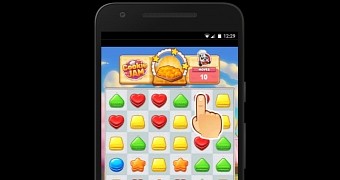During GDC in San Francisco, Google announced a set of new tools for Android game developers, one of which is related to in-game advertising. Apparently, Google introduced a new set of tools called “playables.”
The new tool is actually an interactive ad format that allows users to check out and play a lightweight version of a game, when they see it advertised within another game. Obviously, the new move would benefit developers greatly, as they can make their games more visible to users.
One advantage for users is that it would make discovering new games easier, but not necessarily in a pleasant way. Games within games in the form of ads could confuse some users and affect their overall experience.
Another benefit for users is that they will be able to try out a game before having to purchase and install it on their phones. The format of mini-games and teasers will be directed towards Android phones at first.
Playable ads could come to 1 million apps
Google stated that it intends to bring the new “playable ads” format to the over 1 million apps on the Google Display Network. Apps in the Display Network could get the new format in the coming months. Google already offers advertisers multiple ways to push ads across platforms like Google Search, Google Play, YouTube, AdMob and the Display Network. Playable ads will be compatible with HTML5, according to TechCrunch.
Aside from this, Google introduced an auto-flip feature that automatically orients ads to the phone’s vertical or horizontal position. Previously, ads played only in the vertical or horizontal position and users had to move their phone to watch them.
Google also made changes to the visibility of sale prices in the Play Store. The new update introduces promotions, offering developers the option to communicate the length of the promotion and display both the discounted and the standard price. Previously, app developers had to change the price of an app and the promotion wasn’t signaled in any way, unless creators mentioned it in the description.

 14 DAY TRIAL //
14 DAY TRIAL //